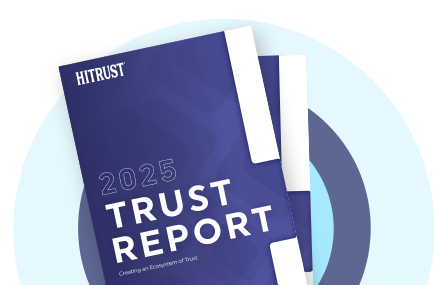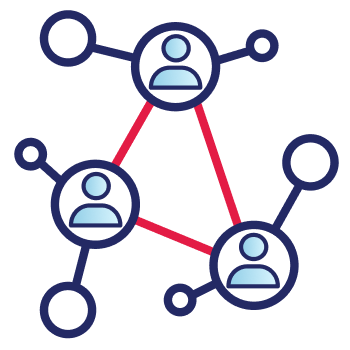HITRUST Empowers You to Get Certified lorem
HITRUST provides a single, trusted framework to help organizations get certified, respond with confidence, and scale trust across their ecosystem lorem ipsum


TRUST Report headline goes here lorem ipsum dolor - only feature assets; reports; news etc. & not core pages of the site - Max 4 promo call-outs

TRUST Report headline goes here lorem ipsum dolor - only feature assets; reports; news etc. & not core pages of the site - Max 4 promo call-outs
The Global Leader in Cybersecurity Assurance
Organizations are under increasing pressure to prove they use security and privacy practices capable of managing information risk in an ever-changing threat and regulatory environment.
The meet these demands, more and more organizations all over the world rely on HITRUST.
HITRUST’s assessment and certification process gives organizations - and their stakeholders, customers, and regulators - the confidence they’re looking for in their risk management and compliance programs.
What are you interested in?
Faster Vendor Decisions. Lower TPRM Costs. Stronger Security Assurance.
Replace manual questionnaires and inconsistent evidence with standardized, validated HITRUST assurances that streamline vendor reviews, reduce cost, and strengthen risk confidence.

- Jump to section:
- Challenges
- How We Help
- Who We Help
- Integrations
- Products
- Resources
Most Third-Party Cyber Risk Management Fails When You Need It Most
Outdated processes and inconsistent assessments slow reviews, drive up costs, and leave organizations exposed to vendor-related breaches and disruptions — with little evidence that risk is actually being reduced.
-
Replace fragmented reviews with a standardized vendor process.
-
Reduce TPRM overhead by replacing manual reviews with validated assurance.
-
Strengthen security with consistent, threat-adaptive control validation.
-
Cut vendor back-and-forth with a clear, defensible assurance model.
Managing third-party risk is an overwhelming challenge. Increasing number of vendors, shrinking budgets, and limited expertise cannot only put your data and reputation at risk but also disrupt business continuity.
HITRUST Delivers Real Risk Reduction Across Your TPRM Program.
HITRUST replaces fragmented assessments with a unified, certified system that scales across your vendor ecosystem and proves actual risk is identified, managed, and mitigated.
-
Classify vendors by inherent risk.
Assess based on data sensitivity, access level, and business impact. Apply the right assessment—e1, i1, or r2—so effort matches exposure.
-
Get a rapid view of vendor posture.
Run a fast, lightweight evaluation to gauge cybersecurity readiness.
-
Standardize reporting for easier reviews.
Use audit-ready dashboards and scores to simplify decisions and speed review cycles.
-
Reduce review volume across your vendor base.
Let certified vendors share one assessment with many customers to cut redundancy, save time, and reduce risk.
Data loss was once the worst-case scenario. Today, ransomware threatens total business shutdown.
Read the eBookFor Organizations with 5 Vendors or 5,000 Vendors
Whether your vendor ecosystem is simple or sprawling, HITRUST delivers a scalable, trusted approach to third-party risk—without the complexity, guesswork, or wasted effort.

Apply prescriptive cybersecurity controls that evolve with threats and align effort to real risk.

Simplify workflows with tiered assessments mapped to vendor criticality and risk level.

Reduce regulatory exposure with certifications mapped to 60+ global standards.

Gain transparency and defensibility across your third-party risk program.
Breach-Free Rate Among Certified Environments
Cap Completion Rate
Saved by Eliminating Bespoke Audits & Surveys
HITRUST Integrates TPRM Solutions into ServiceNow® AI Platform
Streamline third-party risk management with HITRUST's automated, scalable, and efficient integration within ServiceNow workflows.
Automate TPRM with HITRUST Assurance Data in ServiceNow Workflows
The HITRUST integration with ServiceNow automates and streamlines third-party risk workflows by embedding standardized HITRUST assurance data directly into the ServiceNow platform. This enables real-time visibility, faster vendor reviews, and stronger alignment between security and operations.
Explore HITRUST’s Solutions to
Strengthen Your Risk Program
As more organizations recommend or require HITRUST certification from their vendors, HITRUST TPRM Services can help you stay ahead with managed services and ServiceNow integration.



